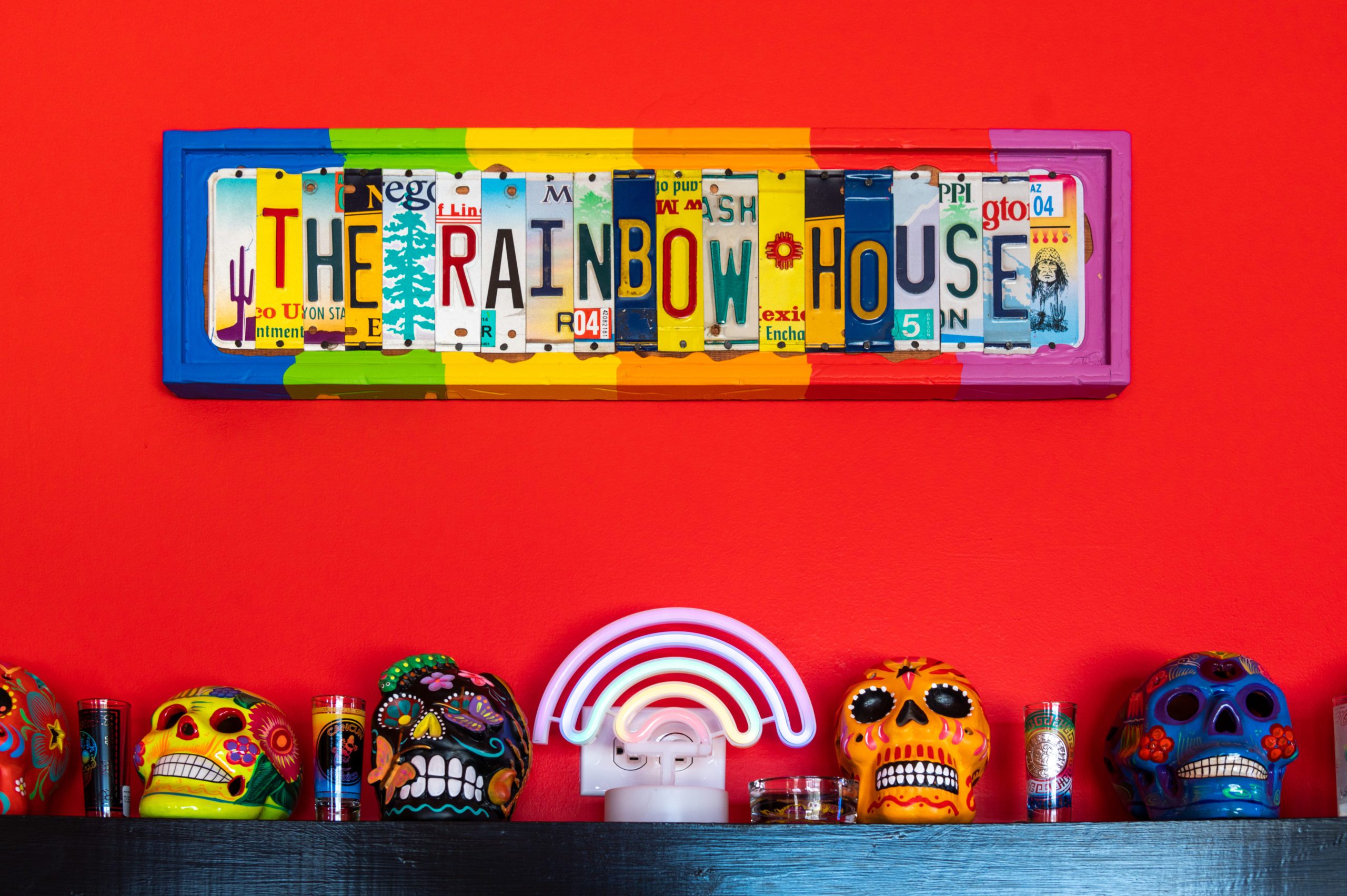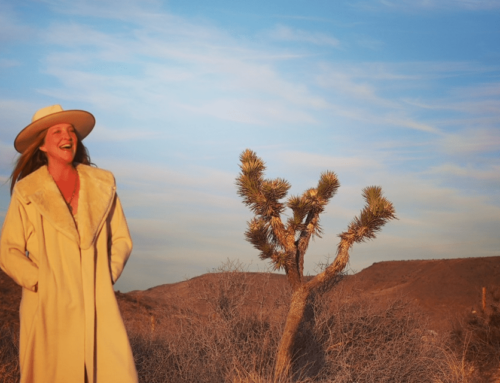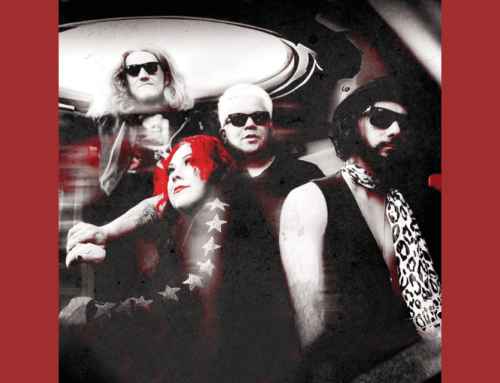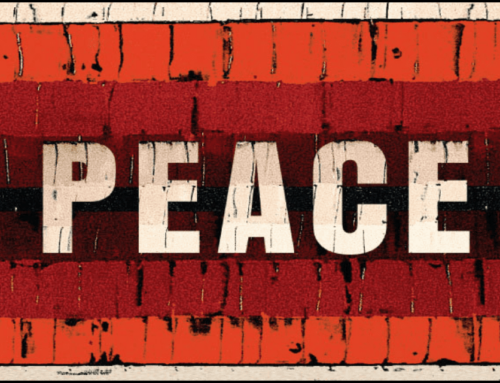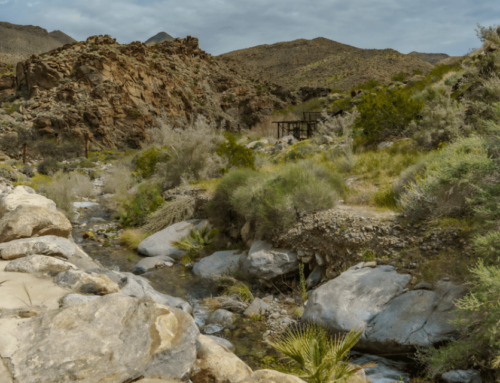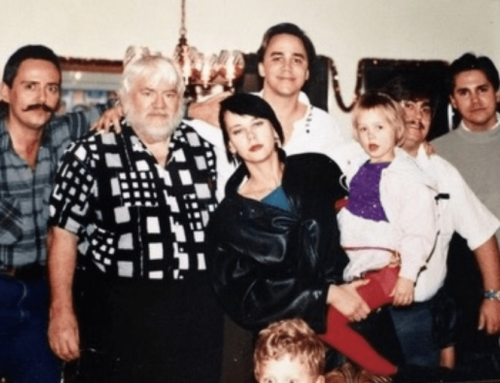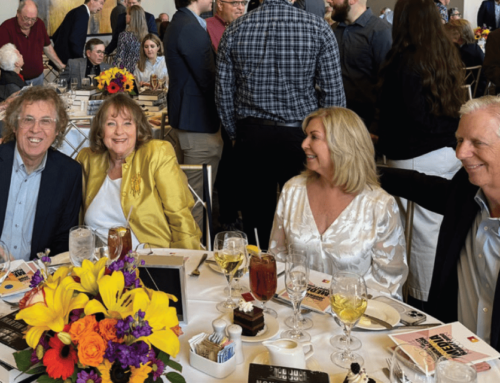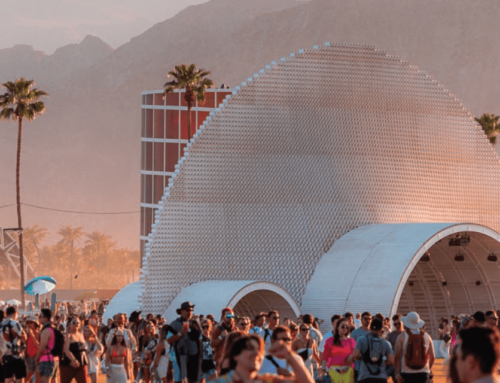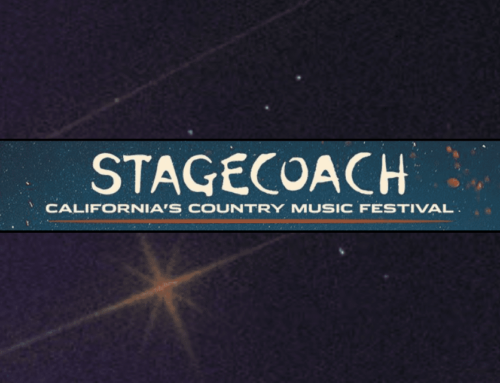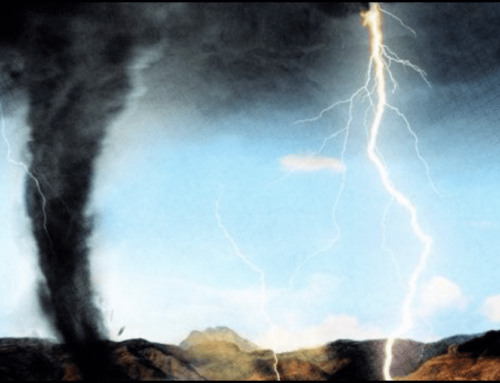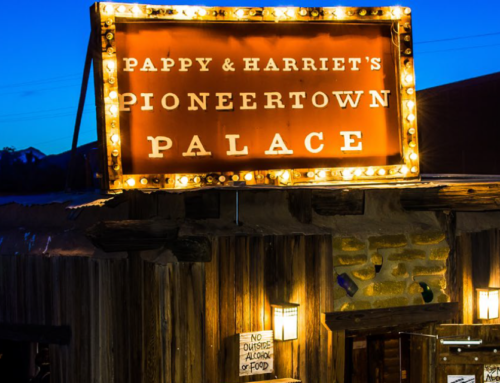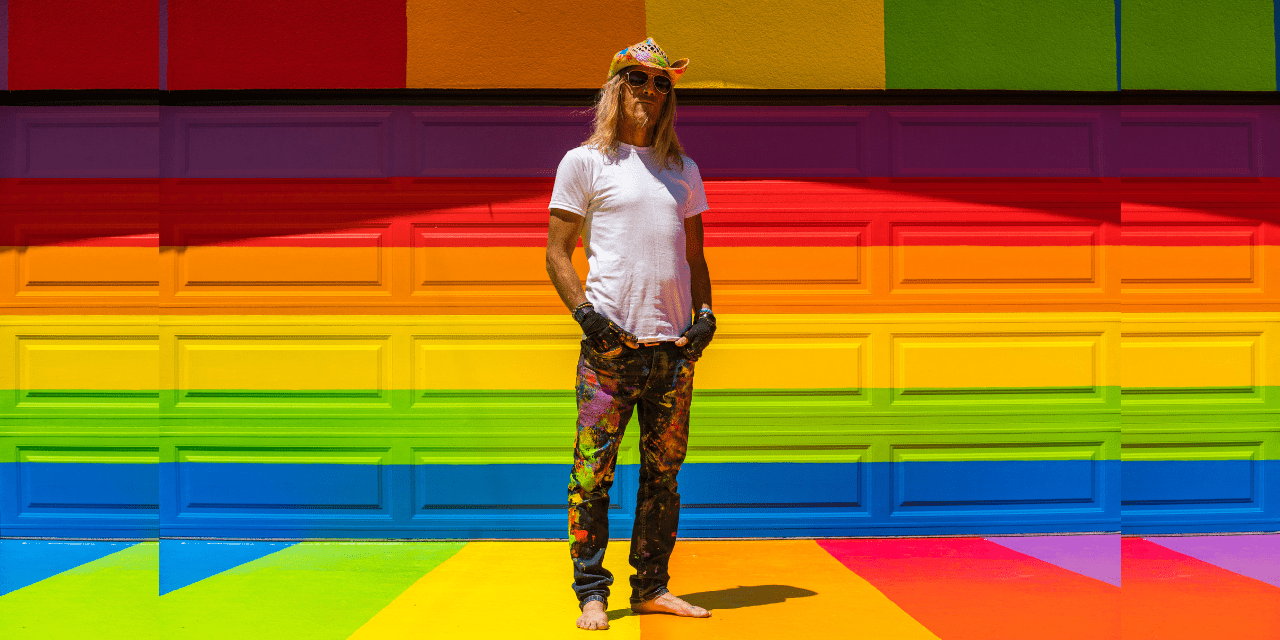
The Rainbow House: A Wizard of Ozzy Wonder
By Lisa Lynn Morgan
Pandemic hit like a neutron bomb… a sudden bang followed by ripple effects of fear and fearful behavior. Empathic folks like Patrick Hasson felt all of it… the terror, the divisive politics, the blasting of anger and hatred… the death. For a recovering addict, isolation was fertile soil for a potentially fatal slip.
Hasson had enjoyed an independent career in Hollywood as an award-winning writer/director. He attended UCLA’s Graduate Program for Screenwriting. Patrick wrote and directed the restaurant comedy Waiting, was one of 13 American directors chosen to participate in the Berlinale Talent Campus at the Berlin Film Festival and directed the cult horror film Blood Shed. However, he came to terms with the fact that he couldn’t survive the lifestyle. He escaped to Joshua Tree to save his own life.
Things had begun to gain momentum for Hasson here in Joshua Tree. A self-taught painter, he painted solely with six custom colors – the most saturated red, orange, yellow, green, blue, and purple he could achieve, dripping them onto black canvas with his own modus operandi. It was therapy – a therapy he wanted to give to the world.
His first inspired works were a collection of portraits based on the music makers that helped him discover the healing properties of the desert. “Desert Dudes” was a compilation of Desert Rock icons John Garcia and Brant Bjork of Kyuss, Dave Catching of Eagles of Death Metal, Sean Wheeler of Throw Rag, Josh Homme, Nick Oliveri, and Joey Castillo of Queens of the Stone Age, Mario Lalli, Fatso Jetson, Gary Arce of Yawning Man, and others. His successful show at the Hi-Desert Cultural Center was covered by Desert Sun and picked up nationally by USA Today. Even better, some of his music heroes showed their gratitude and performed at the closing party at the museum.
But the global shut down caused by pandemic brought everything to a painful halt. “Somewhere along the way I stopped doing the things that helped me get sober in the first place. I stopped going to meetings and stopped talking to my sponsor,” Hasson admits. “The lock down and the fear and negativity became too much. I went to a doctor and got a prescription for Ativan, knowing that I had struggled with that drug before. Fortunately, when I came back around, I called my sponsor, and he took me back under his wing.”
With renewed vigor, perspective, and a new recovery date (April 2020), Hasson began putting his life back together. However, he found himself struggling when it came to painting. “I was just kind of all over the place. I had started a classic rock portrait series ‘1969,’ featuring the musical legends (Jimi Hendrix, Robert Plant, Paul McCartney, etc.) that made 1969, the greatest year in rock music history. I heard my inner voice say, ‘Go full rainbow on the house.’ I know it may sound crazy, but whenever I hear that voice, it tells me the right thing.”
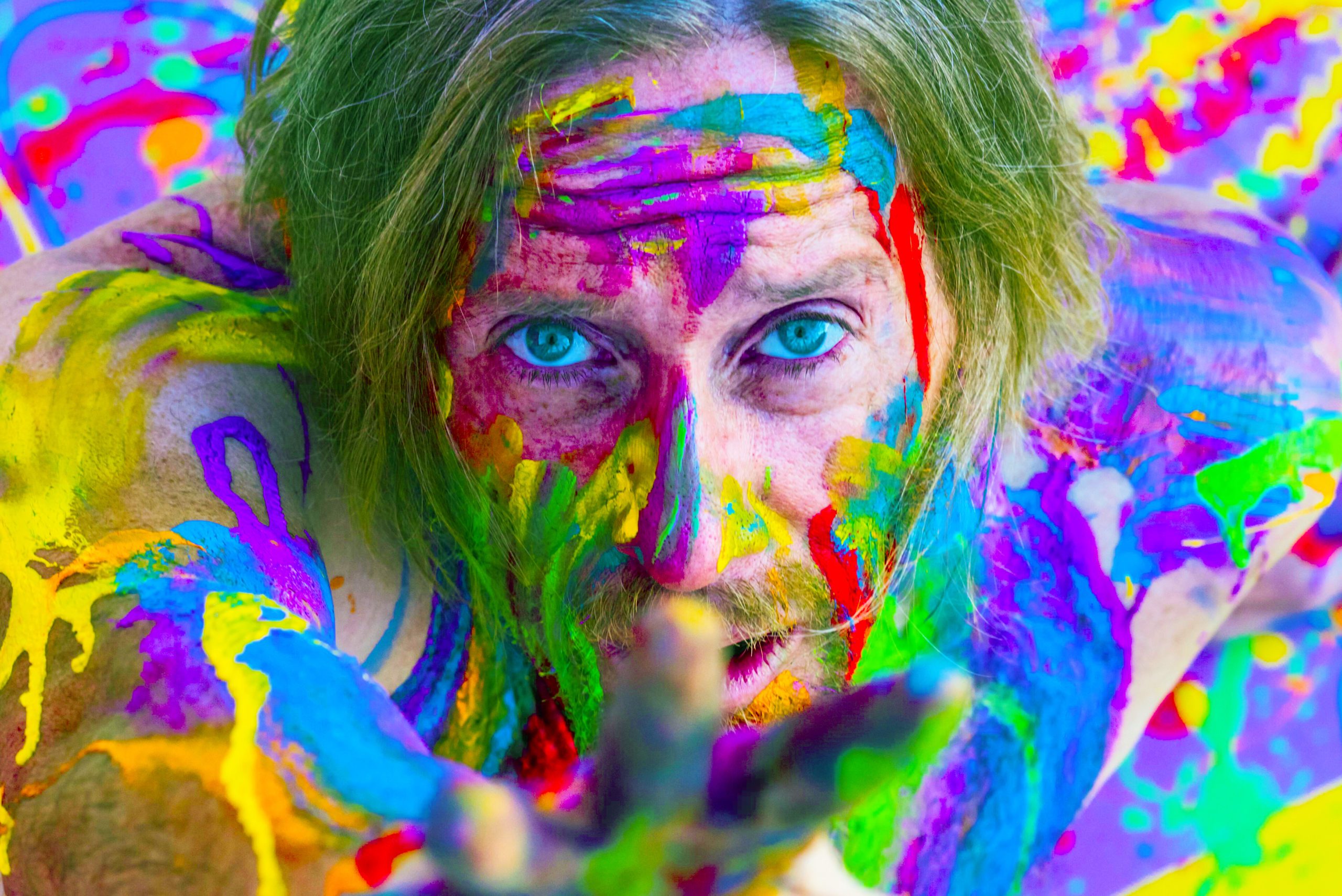
The undertaking was more than Hasson could have ever imagined. There were times he thought he was crazy. Being somewhat of a perfectionist made him tediously attentive to painstaking detail. But people began to take notice, in particular, one single mother and her children. The pandemic had left them homeless and living out of their vehicle. They would drive by often, parking outside. Hasson approached them to investigate. The woman, with tears in her eyes, said, “We come by here as often as we can. It’s the only thing that really makes us happy.” It was all the sign Hasson needed to confirm his calling.
“Other people began walking by to see what I was doing,” Hasson elaborated. “You know how we do here – keeping on eye on each other. I watched as fear and grief turned to smiles and communion.”
The project didn’t come without pain in the progress. Hours on end detailing ceilings in multiple coats, repeating the process on the floors, being pristinely precise in the corners all took a toll on him physically.

“I was lifting rocks, and something popped. I can usually work through things, but I finally had to get to the doctors. I was told I had a herniated disk in addition to a lot of arthritis. I’m a one man show pretty much, but this took me out for 6 months. I thought, ‘What am I doing? Maybe I should sell the house.’”
Hasson has recovered somewhat, but is still in a lot of pain, and awaits surgery. “I have to exercise every morning before I get moving, and I can’t lift anything over 10 pounds, but I’m grateful to be moving at all. Overall, I’ve been working on this for two years. So many times, I questioned what I was doing. I knew it was going to be a lot of work, but I truly had no idea how insane it is to paint stripes on a ceiling. I’ve been through a lot of stuff, but this has been the most difficult thing I’ve ever done in my life.”
“I don’t know exactly what it’s fully meant to be, but now that it’s almost finished, I’d like for as many people as possible to be able to come and experience it. It’s a work of livable art. No one will have seen anything like this because that’s what art is about. It takes you to another place and brings you all in. It will be available for film and photo shoots, weddings, and events. Artist Antoni Gaudi in Barcelona, Spain, Noah Purifoy right here in Joshua Tree, have both been huge inspirations to me. Their works change your perspective on life; you get a feeling that’s indescribable… I want people to feel that here.”
There is an unmistakable transcendence that takes place as you are engulfed in Hasson’s color pallet. This house, once a dilapidated meth house, has been transformed into everything that much of Joshua Tree’s art represents – the trifecta of color, light, and redemption. Staring into Patrick Hasson’s own portrait, you can see a man of great intensity, feathered in paint, reaching out to you with eyes and hands. One wonders if he is reaching out for help to pull him away from tethers that weigh him down, or if he is reaching out to invite you into his “Wizard of Ozzy” color sanctuary created with every fiber of his being. Perhaps it is both. If we learned anything from months of forced isolation, it is just how life enforcing connection and community can be. To save himself and others, Hasson has created a true wonder – an unprecedented sanctuary where creative minds can wander, and people can commune in colors powerful enough to dilate their souls. Its full potential is yet to be revealed.
The Rainbow House will be open to the public for viewing beginning June 18th and every Saturday following from 10am – 3 pm. It’s located at 61553 El Reposo Street, Joshua Tree, CA 92252.
Find Patrick Hasson at www.patrickhasson.com, email at PatrickHasson77@gmail.com, IG: @patrickhasson, or Facebook at Patrick Hasson.
All Photos by Sandra Goodin
